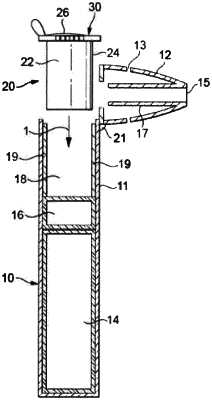| CPC A24F 40/53 (2020.01) [A24F 40/46 (2020.01); A24F 40/10 (2020.01); A24F 40/42 (2020.01); A24F 40/50 (2020.01); H05B 1/0244 (2013.01); H05B 2203/021 (2013.01)] | 10 Claims |

|
1. An electrically operated aerosol-generating system, comprising:
a heating element configured to heat an aerosol-forming substrate proximate to the heating element;
a power supply configured to supply power to the heating element; and
electric circuitry in communication with the heating element and the power supply, the electric circuitry comprising a memory and being configured to:
regulate the supply of power to the heating element during a plurality of discrete heating cycles in response to user inputs,
determine a maximum electrical resistance of the heating element during each heating cycle,
calculate a rolling average value of the maximum electrical resistance of the heating element for n preceding heating cycles, wherein n is an integer greater than 1,
compare the maximum electrical resistance of the heating element with the calculated rolling average value,
determine an adverse condition when the maximum electrical resistance is greater than the calculated rolling average value by more than a threshold value, the threshold value being stored in the memory, and
control the power supplied to the heating element based on whether there is the adverse condition at the heating element or to provide an indication based on whether there is the adverse condition at the heating element.
|